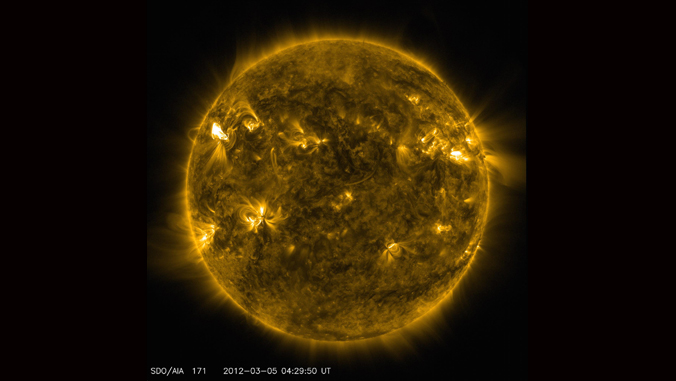
A new study led by the University of Hawaiʻi at Mānoa has refined scientists’ understanding of the amount of hydrogen, helium and other elements present in violent outbursts from the Sun, and other types of solar “wind,” a stream of ionized atoms ejected from the Sun.
Coronal mass ejections (CME) are giant plasma bursts that erupt from the Sun, heading into the solar system at speeds of 2 million miles per hour. The majority of CME atoms are hydrogen. When the particles interact with Earth’s atmosphere, they produce the multicolored northern lights. They also have the potential to knock out communications, bringing modern civilization to a standstill, and their cause is a mystery.
UH Mānoa School of Ocean and Earth Science and Technology (SOEST) researcher Gary Huss led a team of scientists to investigate a sample of solar wind collected by NASA’s Genesis mission.
In 2001, the Genesis probe went to space to gather samples of solar wind, and brought the material back to be studied. Those samples represented particles gathered from different sources of solar wind, including those thrown off by CME.
Hydrogen influences everything
The Genesis samples provided a more accurate assessment of the hydrogen abundance in CME and other components of solar wind. About 91 percent of the Sun’s atoms are hydrogen, influencing everything happening in the solar wind plasma.
An important component was developing appropriate standards using terrestrial minerals with known amounts of hydrogen, implanted with more hydrogen by a laboratory accelerator.
A precise determination of the amount of hydrogen in the solar wind allowed researchers to discern small differences in the amount of neon and helium relative to hydrogen ejected by these massive solar outbursts. The new measurements showed that helium and neon were both enriched in CME, providing clues to the Sun’s underlying physics that cause ejections.
“The ejected material appears to be enriched almost systematically in atoms that require the most energy to ionize,” said Ryan Ogliore, co-author and assistant professor of physics at Washington University in St. Louis. “That tells us a lot about the physics involved in the first stages of the explosion on the Sun.”
The finding brings researchers closer to understanding the origins of these particular solar events.
For more on the story, go to SOEST’s website.
—By Marcie Grabowski

